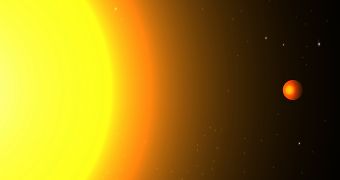Kepler's exoplanet-hunting days are over, NASA has announced that attempts to restore the telescope to full working conditions have failed, but its data will keep astronomers happy for years. A team at MIT, for example, have used Kepler data to discover one of the fastest planets known, Kepler 78b.
The planet, some 700 light-years away from Earth, completes a full orbit around its star in just 8.5 hours. As you can expect, the planet is very close to its star, it orbits at just about three times the diameter of the star.
Because it's so close, the surface temperature is incredibly high, some 3,000 degrees Kelvin, or more than 5,000 degrees Fahrenheit which means that the entire surface is made up of melted rock, a lava ocean.
But astronomers are more excited about a couple of other things. The researchers were able to detect light reflected or emanating from the planet, a first for a planet so small.
What's more, due to the proximity to the star, astronomers may be able to measure the effects of the planet's mass on the star, making it the first time the exact mass of an Earth-like planet has been determined.
The planet doesn't have the shortest orbit time, some researchers from the same team have actually studied a planet with a year of just 4.25 hours and published the results in a different paper.
This planet, KOI 1843.03, is so close to its star that astronomers believe it's almost entirely made of iron, anything else would be destroyed by the incredible tidal forces.
"Just the fact that it’s able to survive there implies that it’s very dense," Josh Winn, an associate professor of physics at MIT, and co-author on both papers wrote. "Whether nature actually makes planets that are dense enough to survive even closer in, that’s an open question, and would be even more amazing."

 14 DAY TRIAL //
14 DAY TRIAL //